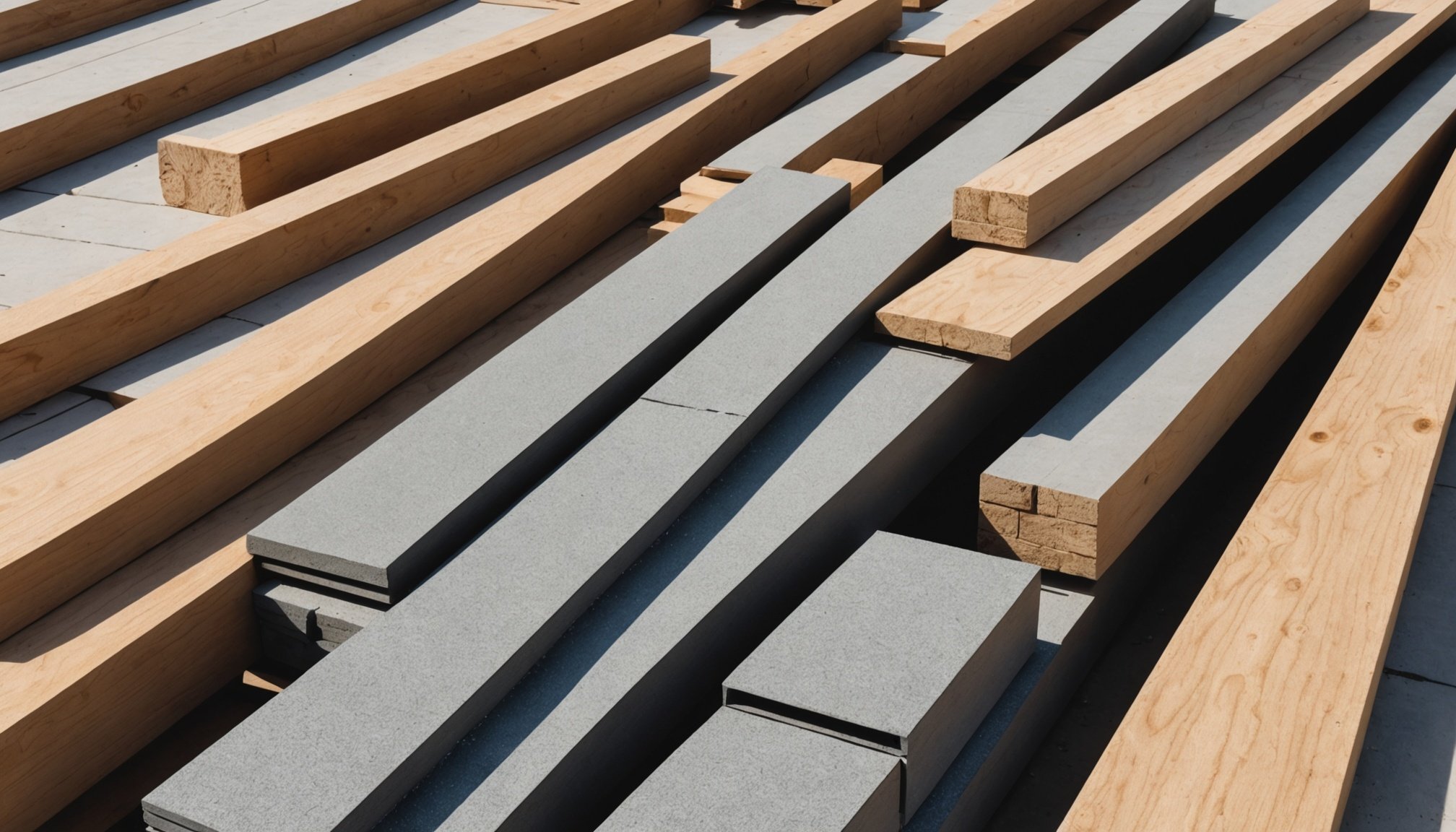Advantages of High-Quality Building Materials
When it comes to construction, the right choice of materials can make all the difference in the world. Using high-quality building materials ensures enhanced durability and a longer lifespan for structures. This means that buildings are more resistant to wear and tear, environmental factors, and other elements that could compromise their integrity. For instance, structures built with top-grade concrete or steel can withstand harsh weather conditions better than those using lower-quality alternatives.
Furthermore, investing in superior materials leads to reduced maintenance costs over time. The initial investment in quality might be higher; however, the construction benefits include less frequent repairs and replacements, saving money in the long run. Owners will appreciate fewer disruptions and enjoy peace of mind knowing that their buildings are structurally sound.
In parallel : Designing urban public spaces for seniors: a complete blueprint for accessibility and inclusivity
Another significant advantage is the improved aesthetic appeal and market value of properties constructed with top-notch materials. High-quality finishes and elements contribute to a polished appearance, often becoming a selling point in the real estate market. The perception of durability and superior build quality typically attracts buyers and can justify higher property valuations. Hence, selecting the right building materials is crucial for both the physical endurance and financial value of a project.
Cost-Effectiveness Over Time
Investing in technology often comes with hefty upfront costs, sparking questions about cost savings in the long run. When it comes to robotic hoovers, the financial benefits become evident. Initially, the investment value may seem high, but ongoing savings often justify these costs.
In parallel : Transforming cityscapes: how innovative landscape design can boost urban biodiversity in new real estate projects
Initial Investment Versus Long-term Savings
Robotic hoovers offer a unique balance between initial cost and potential long-term savings. The upfront purchase might require more cash outlay compared to traditional vacuum cleaners. However, their energy-efficient technology, low maintenance requirements, and autonomy can lead to reduced expenses over time.
Case Studies Showing Cost Comparisons
Consider several case studies where homeowners compared their annual expenses before and after investing in robotic hoovers. These analyses typically demonstrate that energy and maintenance savings accumulate over time, making the initial investment value worthwhile.
Resale Value and Financial Security
Moreover, robotic hoovers often maintain strong resale value. As demand grows, these devices secure your financial benefits beyond mere utility. Selling a second-hand unit can recoup a significant part of the purchase cost, particularly those maintained from the start.
Understanding and comparing these aspects provides clarity on how robotic hoovers can translate into tangible cost savings over time.
Environmental Sustainability
In the world of eco-friendly construction, opting for sustainable building materials is crucial for reducing the environmental impact of development. By selecting materials that are renewable and easily recyclable, builders can significantly lower the carbon footprint of their projects.
The benefits of sustainable materials for the environment are substantial. They not only conserve natural resources but also reduce waste and pollution, promoting a healthier planet. For instance, using bamboo instead of traditional hardwood reduces deforestation, as bamboo grows much faster and can be harvested without harming the surrounding ecosystem.
Considering the long-term ecological impact of material choices is essential. Projects that incorporate sustainable materials tend to have a lower overall energy consumption across their lifespan. This includes everything from manufacturing to transportation and eventual disposal or repurposing. Over time, this approach contributes to a reduction in greenhouse gas emissions.
Numerous case examples of sustainable projects demonstrate these principles in action. The Bullitt Center in Seattle, often called the “greenest” commercial building, showcases how innovative materials and sustainable design can coexist with functionality and aesthetic appeal. Such projects serve as benchmarks for future developments aiming to harmonize structure with nature. Embracing sustainability results not only in ecological benefits but also economic savings through energy efficiency and lower maintenance costs.
Expert Opinions and Industry Insights
Exploring expert advice and industry knowledge aids significantly in understanding building standards. Industry insights offer invaluable perspectives directly affecting construction outcomes, notably through testimonials, scientific insights, and sustainability analysis.
Testimonials from Contractors
Professionals in the field provide practical advice about project challenges, emphasising adherence to building standards. Contractors frequently advise that selecting quality materials not only ensures compliance but also enhances structural integrity. These real-world experiences underscore the importance of careful planning and execution.
Insights from Building Scientists
Building scientists offer insights into how cutting-edge techniques and materials align with expert recommendations. They highlight the need to prioritise energy efficiency and durability, advocating for materials that simultaneously meet building standards and sustainability goals. Their findings contribute significantly to narrowing the gap between theoretical knowledge and practical application in construction.
Analysis from Sustainability Experts
Sustainability experts offer a nuanced analysis, balancing cost and quality. They stress informed decision-making, highlighting how expert guidance aids in selecting eco-friendly materials that do not compromise on quality. Consequently, these insights form a robust foundation for responsible building practices, emphasising long-term affordability and environmental consideration in project planning and execution.
Practical Tips for Selecting High-Quality Materials
Selecting the right materials is crucial for ensuring the long-term success and safety of any project. By following material selection guidance and best practices, you are more likely to make informed decisions. Here’s a buyer’s guide to help you through this process.
Key Factors to Consider
When choosing materials, consider factors such as durability, cost, and suitability for the intended application. Ask yourself: What are the environmental conditions the material will face? Materials need to withstand specific stresses, such as moisture or extreme temperatures, to ensure the longevity and performance of the end product. Evaluating the material’s compatibility with other components is also vital for overall integrity.
Resources for Assessing Material Quality
There are numerous resources available that can provide insights into material quality. Industry standards and specifications can guide you in ensuring compliance with safety and performance requirements. Additionally, conducting tests or consulting with experts can validate the material’s capabilities. Trade shows and industry publications can also offer valuable information about emerging materials and technologies.
Collaborating with Trusted Suppliers and Contractors
Building a reliable network of trusted suppliers and contractors is essential. These partners can provide not only quality materials but also expert advice. This collaboration can lead to better material choices, cost efficiency, and adherence to project timelines. Prioritise suppliers with a track record of reliability and transparency to ensure the best outcomes.
Comparisons with Lower-Quality Materials
The use of inferior materials in projects can lead to notable performance differences when evaluated against higher quality counterparts. A comparative analysis reveals these differences starkly through both a short-term and long-term lens.
Short-Term versus Long-Term Performance
In the short term, cheap materials may seem like a cost-effective solution. Their initial usability might suffice; however, as time progresses, the drawbacks of cheap materials become apparent. Machines or structures crafted from poorer materials tend to degrade faster, resulting in frequent maintenance and unexpected breakdowns.
Common Issues with Low-Quality Materials
Common issues frequently include:
- Warping: Materials may lose their original shape.
- Cracking: Structural integrity is compromised over time.
- Corrosion: Especially prevalent in environments with high humidity or salinity.
Real-World Examples of Material Failure
Subpar materials often incur hefty costs. For instance, infrastructure using low-quality concrete might develop severe cracks, leading to costly repairs or replacements. In electronics, cheaper components can result in overheating or device failure, requiring consumers to invest in replacements sooner than anticipated.
Understanding these performance differences underscores the necessity for investing in reliable, durable materials. The initial premium pays off by reducing the frequency and expense of repairs, while ensuring better overall performance and safety standards.











